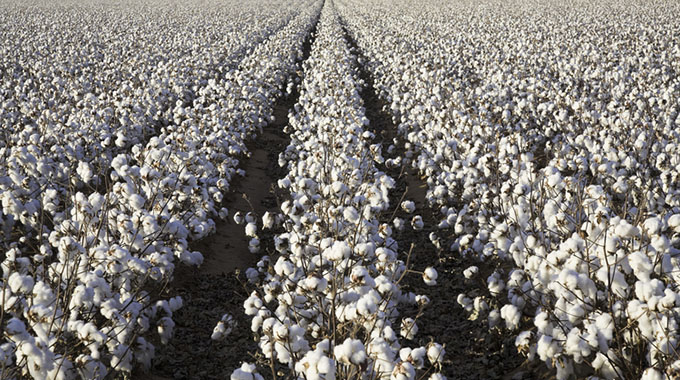
Zimbabwe’s cotton production is this year expected to be higher than last year. This is despite uneven distribution of rainfall across the country that affected other crops. Ahead, Zimbabwe, like many other cotton producing countries is facing a new challenge; low lint prices, which are down 33 percent due to coronavirus. Senior Business Reporter Martin Kadzere (MK) talks to Cottco acting managing director Pious Manamike (PM) about these and other issues affecting the sector. Cottco, which administers Government’s free inputs programme, is the largest financier of the crop and last year contracted about 243 000 farmers who planted 289 000 ha or about 72 percent of total hectarage, according to Government’s First Round Crop and Livestock Assessment Report 2019/20 season.
MK: Last season, the distribution of rainfall across the country was uneven. To what extend has this affected cotton production?
PM: The rainfall distribution experienced in the just ended season was not good though much better than the previous year. This affects the farmers’ yields and we are still to assess the extent of the damage because farmers are still harvesting their crop.
MK: Given the circumstances, what levels of harvest are you projecting this year?
PM: It’s too early to come up with numbers but judging from what we see on the ground there will be an improvement from last season’s numbers.
MK: Cotton is generally a drought resistant crop but due to excessive weather conditions resulting from devastating effects of climate change, yields have been affected. What climate proofing measures are you putting in place to ensure sustainable growth?
PM: The extreme weather conditions are definitely adversely affecting farmers’ yields. We have come up with mitigatory measures like using reapers as a way of conserving moisture.
MK: Last year, you introduced hybrid varieties, which you said can produce higher yields compared to traditional varieties. Were the results satisfactory and any prospects of expanding the hybrid seed project?
PM: Our farmers have just started harvesting their cotton crop after prioritising their food crops. We are still to come up with the actual yields but suffice to say that the observed boll count on the hybrid was much better that ones on the open pollinated varieties. We will definitely be expanding the hybrid seed project.
MK: How did your commercial project perform? Is there any justification of expanding the project next season?
PM: The commercial project took off very well and we are looking forward at increasing the number of farmers under this programme.
MK: Commodity prices across have been affected due to coronavirus and lint prices have not been spared. To what extend will this affect you given that the bulk of our lint is sold at international markets?
PM: This will have a negative impact on our cash flows and profitability and we believe our sector is a good candidate for a Government stimulus package in whatever form. We are also supportive of the idea of subsidy as this will ensure business continuity for the important sector.
MK: You are approaching the intake season when the country is battling to contain the spread of the coronavirus. What measures have you instituted to prevent the spread of Covid-19 at your various buying points?
PM: We are adhering to the Government’s directive of social distancing, wearing of protective face masks, the constant washing of hands with hand sanitisers and generally disinfecting our working areas. We have stopped farmer meetings and more guidelines will be put in place to manage the buying points.
MK: Cotton is one of the country’s largest foreign currency earners. How much was generated last year?
PM: The crop was ravaged by a drought last year and the crop was very small and of poor quality. The nation received about US$25 million.
